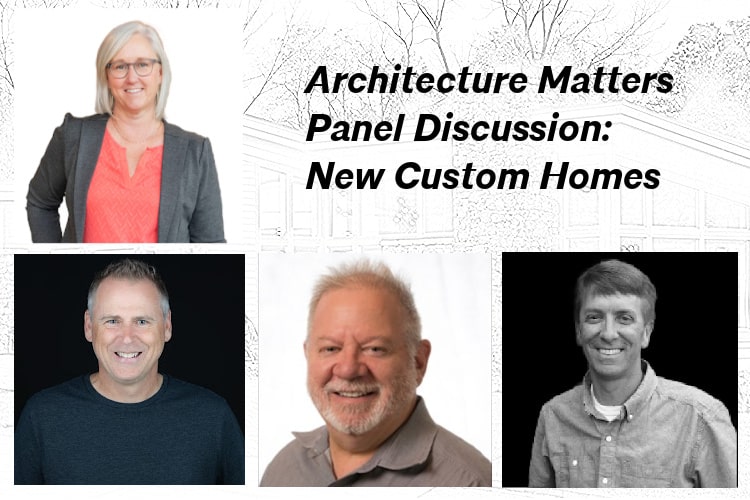What is Cincinnati’s Best Laid Plan?
Thirty years ago we based paint with lead and insulated our homes with toxic asbestos – and while Cincinnati’s existing comprehensive plan might not be outright poisonous, thirty years after its drafting, we live in a world that it couldn’t account for, and with knowledge it could only imagine at the time. Enter Plan Cincinnati, the beginning of the city’s first comprehensive plan since the 70s – which seeks to answer the questions who are we as a city? and what do we want to become?
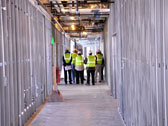
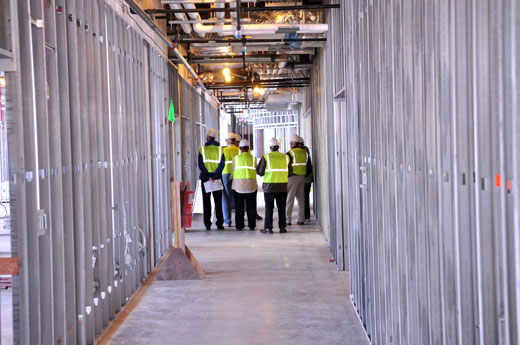 Next week, on February 26th and 27th, Xavier University will host the Neighborhood Summit, a crucial step in the creation of Plan Cincinnati, the new comprehensive plan that will serve as a planning and development blueprint for the city’s future. As the plan seeks to answer the questions Who are we? and Who do we want to be?, the Neighborhood Summit will provide a forum for citizens to give their input on how to build a better Cincinnati.
Next week, on February 26th and 27th, Xavier University will host the Neighborhood Summit, a crucial step in the creation of Plan Cincinnati, the new comprehensive plan that will serve as a planning and development blueprint for the city’s future. As the plan seeks to answer the questions Who are we? and Who do we want to be?, the Neighborhood Summit will provide a forum for citizens to give their input on how to build a better Cincinnati.
Charles Graves, the Director of Cincinnati’s Department of Planning, details the preliminary steps in the process, leading up to the Summit.
“We had four area-wide meetings and we asked [people] What makes a city great?” he explains. “What did they like about Chicago? What did they like about Boston? People talked about cultural elements, people talked about diversity. They mentioned a cosmopolitan city. Having a great transportation system, and one that’s affordable.”
The initial surveys from those meetings indicated an overwhelming belief in the value of arts and education opportunities, with urban mobility, a vibrant downtown, and safe neighborhoods clocking in as only slightly less crucial to a city’s vitality. Beginning with the Neighborhood Summit, Plan Cincinnati will look to identify specific opportunities for bringing those elements to the core of our city.
“What we come up with and suggest to city council can greatly influence where the city puts its money,” said Graves. “This is really like a business plan. And you are asking, where are we going to focus the resources?”
CONNECTIVITY
Overwhelmingly, the counties with the highest median household incomes in America cluster around cities offering diverse public transit options, most notably along the Atlantic Coast and outside Chicago. However, in California, the Bay Area might make the strongest case for increasing urban connectivity. According to the 2007 American Community Survey from the US Census Bureau, the footprint of prosperity around San Jose, CA – five surrounding counties among the top one-hundred – is significantly larger than that of much more populous cities such as Houston and Phoenix. Each of the latter cities offers bus and only single-line light-rail service. But, in addition to bus service, the Bay Area Rapid Transit system has forty-three light rail stations dotting several branching rail lines, compared to the sixteen and twenty-eight found on the single lines in Houston and Phoenix, respectively.
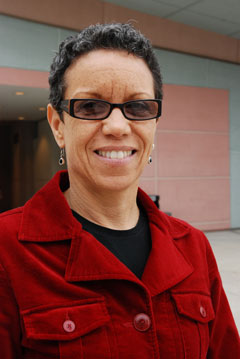 According to Michaele Pride, who teaches community design at DAAP and serves as a member of the comprehensive plan’s steering committee, Plan Cincinnati must address connectivity if we want to see the street-level benefits that are at the core of such strong metropolitan areas.
According to Michaele Pride, who teaches community design at DAAP and serves as a member of the comprehensive plan’s steering committee, Plan Cincinnati must address connectivity if we want to see the street-level benefits that are at the core of such strong metropolitan areas.
“We have to look at what connects communities to places of work, to cultural and educational institutions” she says. “So it’s being strategic about where new workplaces might be located, but most importantly, its connecting neighborhoods. Getting kids closer to their schools. It means transit. It means places to walk.”
Truly, creating a well-connected city goes beyond offering thorough, affordable public transit. Pride noted, “I happen to live in OTR and I can walk to Eden Park and feel like I’m a world away though I’m just steps away from downtown.”
Graves, who has held civil service positions in Baltimore, Washington DC, and Atlanta, echoed her sentiments, saying, “Whether it’s to play, or to work, we want to make Cincinnati a sustainable, walk able city with a lot of mixed use property. I think that’s really going to be the approach and mindset of a lot of cities. That’s where a lot of people are thinking. And that’s what makes a really healthy city.”
BUILDING ON OUR STRENGTHS
With Indianapolis, Lexington, Louisville, Dayton and Columbus all fewer than a hundred miles away from downtown Cincinnati, there is certainly a need to be aware of what efforts regional rivals are making to attract business and talent. But while Graves suggests that Plan Cincinnati should be echoing the move toward a strong, compact city to stay competitive, he also believes that the comprehensive plan must be more than an attempt to Keep Up with the Joneses.
 “Our approach is building on our strengths,” he says. “We have several: the hospitals, the universities and the Fortune 500 companies. The spin-off opportunities there cannot be understated. P&G has helped launch countless small businesses.”
“Our approach is building on our strengths,” he says. “We have several: the hospitals, the universities and the Fortune 500 companies. The spin-off opportunities there cannot be understated. P&G has helped launch countless small businesses.”
Beyond that framework for business development on a multitude of scales, the framework is in place for a noteworthy physical city, too, as Pride notes, “We have a great supply of domestic buildings. Interesting architecture. Especially downtown and Over-the-Rhine, but a lot of Cincinnati’s neighborhoods have that character.”
While the initial Plan Cincinnati surveys indicated citizen concern over vacancy in those areas – particularly Over-the-Rhine – the latent potential there could actually become an area of strength as the city develops the comprehensive plan.
As the Executive Director of Working In Neighborhoods, Sr. Barbara Bush, who joins Pride on the Plan Cincinnati steering committee, describes the mindset that could turn vacancy into opportunity. 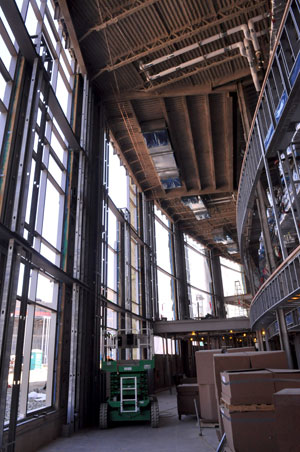
“Realistically, we’ve lost a number of homes. So the question becomes, what do you want to happen? Do you want [the urban core] to be open to something else? Is there a need for a specific type of housing?”
Bush has a tremendous amount of experience working in communities at the grassroots level, and sees Plan Cincinnati as a chance to make areas that are ripe for development into places that can strengthen Cincinnati through diversity.
“There are advantages to living in diverse communities,” she says. “It gives people at the lower end an opportunity to see what other options are there to work toward. And people in lower-income areas will tend to take care of each other. A sense of community gets created very quickly.”
A resident of Spring Grove Village, Bush praises her neighbor to the south as an example of the proverbial “win-win,” bringing together individuals of all types, and offering a vibrant, much sought-after neighborhood experience.
“You take Northside. Northside has just about everything you could possibly want. To be able to find a record album, a tattoo parlor, or a vegan restaurant. Affordable hardware. Things which you couldn’t find without the diversity there,” she says.
SKATING TO WHERE THE PUCK WILL BE
M uch like Over-the-Rhine, Northside has indeed seen a flurry of development in recent years by maintaining a rare mix of residents that includes an ethnically-diverse working-class, families, artists, and highly-educated households. But how can the comprehensive plan best provide opportunities for micro-renaissances like these to occur citywide?
uch like Over-the-Rhine, Northside has indeed seen a flurry of development in recent years by maintaining a rare mix of residents that includes an ethnically-diverse working-class, families, artists, and highly-educated households. But how can the comprehensive plan best provide opportunities for micro-renaissances like these to occur citywide?
Hockey superstar Wayne Gretzky has explained his on-ice prowess by saying that he skated not to where the puck was at a given moment, but rather, to where the puck was going to be the next. In drafting a Comprehensive Plan, arguably the biggest challenge will be how to prepare Cincinnati for both contingencies: where the proverbial “pucks” of industry and talent-attraction and retention are now, and where they might be decades down the road. “We’re really talking about planning for the next generation,” Graves says. “So we want to get the youth involved.”
Thankfully, Cincinnati can count DAAP as one of its great assets, and as the Plan Cincinnati Neighborhood Summit approaches, the wealth of young planning-minded voices is poised to be more valuable than ever.
Alison Verba is one example – a graduate student in community planning who has called Cleveland, Montreal and New York home, prior to coming to UC. Explaining future-focused planning, she says, “There’s a social, economic, and a physical component. It doesn’t always feel like you live in a city if you have to drive everywhere, and that creates a sense of isolation between neighborhoods by limiting the mobility and interaction between pockets of young people.” 
It is Verba’s belief that the same physical connectivity articulated by Graves will create an environment that facilitates a better connected mental-space: a place that is a fertile home for business innovation and interpersonal relationships. It’s an idea that Pride echoes as well.
“Above and beyond if this neighborhood has a grocery store or where this road leads, it’s about how to be future focused. We need to be thinking fifty years. The comprehensive plan is very much the level where we can have a significant impact for the long term for this city.”
While we can’t predict exactly where the “puck” of job creation will be in ten years, Plan Cincinnati can create an atmosphere that will remain attractive to business and talent, for decades to come.
“A strong urban core just facilitates a simpler life,” says Verba. “In ten years when we have houses, kids and dogs we will want the same sort of lifestyle, even if we change some of the [personal] dynamics.”
PARTICULARLY CINCINNATI
Graves remembers those changes taking root, having served as Senior City Planner in Cincinnati from 1981 to 1986, before venturing east for other opportunities.
“Thinking back to 1980, we were just building P&G [Towers] Headquarters. In 1980, we were just completing One Lytle Place. In 1980, our riverfront looked a whole lot different. The city has changed dramatically in the last thirty years,” he says.
 Whatever ends up in the final draft of the comprehensive plan, Graves recommends a process that is mindful of the role that future development can have in defining the city. And Cincinnati, he believes, should look for inspiration in its own unique traits and its singular past. Even after his involvement with the comprehensive plans in place in Baltimore, Washington DC and Atlanta, he maintains, “Each city is different. You can’t just take what worked in one and bring it here. We need to celebrate our heritage and our history.”
Whatever ends up in the final draft of the comprehensive plan, Graves recommends a process that is mindful of the role that future development can have in defining the city. And Cincinnati, he believes, should look for inspiration in its own unique traits and its singular past. Even after his involvement with the comprehensive plans in place in Baltimore, Washington DC and Atlanta, he maintains, “Each city is different. You can’t just take what worked in one and bring it here. We need to celebrate our heritage and our history.”
The Neighborhood Summit is step one. Bush, long a voice for local people, explains the importance of citizen input.
“Looking at the bottom line, the easiest thing to do is to tear down,” she warns. “But we want to preserve the character of the city, and having the communities involved is so important.”
Beyond the physical plant, though, she intimates that a strong city is the one that is ultimately designed by the desires of its people.
“If people have some say, they stay longer: it helps the tax base. When people want to be in an area, police will tell you, there are fewer problems with crime and less of a financial burden. People should have a say in what’s around them. This is their life. They not only have their money there, but their family.”
That human capital imbues any given city with a unique collective personality. However, Plan Cincinnati now offers the city and its citizens the chance to redefine the whole entity, body as well as soul, in terms of “Who are we?” and “Who do we want to be?, “and, “How do we get there?”
“Cincinnati is a bunch of buildings, but it’s also people,” says Pride. “It’s important to be mindful of affordability, access to jobs, transportation. It’s creating a place that people would choose. For reasons that are particular to Cincinnati.”



